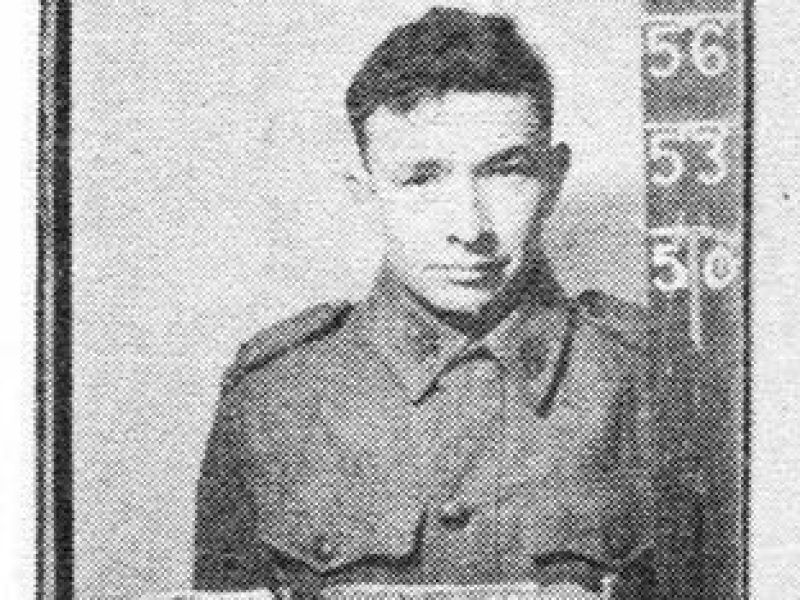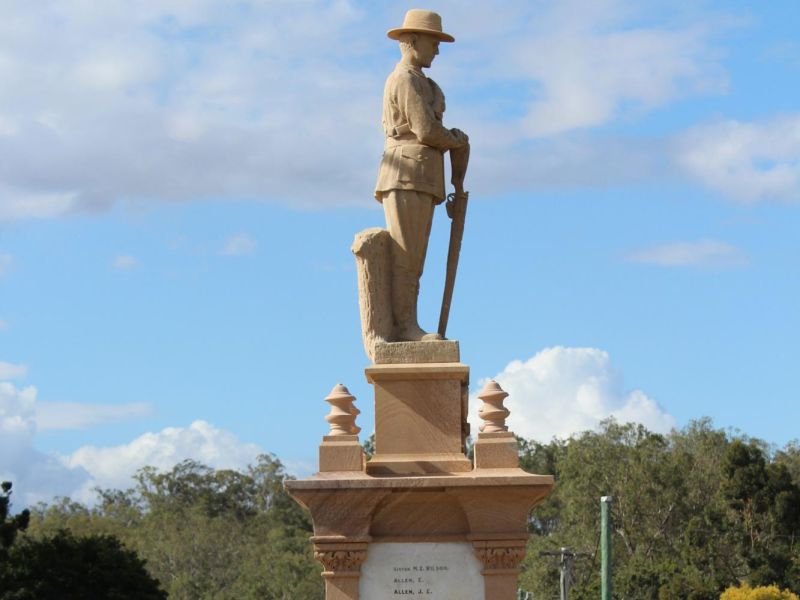QX21876 Private Stanley Joseph Cousins, 2/19th Australian Infantry Battalion
Stanley Cousins was born on 8 April 1921 in the Melbourne suburb of Brunswick, the son of Arthur Raymond and Mary Margaret Cousins.
His mother died in 1926, when he was just five years old. After a failed second marriage and the onset of the Great Depression, Stanley’s father went on the road with Stanley and his younger brother Leslie, looking for work. Having spent some time in Sydney, the boys were left in the care of the Sisters of Mercy at Cowper orphanage.
Isolated from the rest of their family, the two had an extremely close bond. Stanley looked after Leslie, finished his education at the age of about 12 and was employed on farms in the surrounding area. He continued to support Leslie, who won a scholarship and continued to the leaving certificate.
When Stanley enlisted on 5 August 1941, at the age of 20, he listed Leslie as his next of kin.
After a period of training, Private Cousins was granted pre-embarkation leave in early December, and on 10 January 1942 embarked from Sydney for overseas service.
By the end of January 1942, Australian forces had withdrawn from the Malay peninsula onto Singapore Island. The 2/19th had been holding and defending the vital crossroad at Bakri until they were outflanked. they made a fighting withdrawal through a succession of Japanese roadblocks, and were constantly harried from the rear and the air. With ammunition exhausted, casualties mounting, and no chance of relief, the force was obliged to leave its wounded behind; these men were captured and massacred.
Only 271 members of the 2/19th Battalion were mustered at Yong Peng and withdrawn to Johore Bahru. There the battalion received 650 reinforcements, including Private Cousins, and reorganisation and training commenced. The battalion crossed over the Johore Straits onto Singapore Island on 31 January and took up defensive positions on the island's west coast. The wide frontage that the battalion was required to cover, however, meant that its platoons and sections had to be widely dispersed.
On 8 February, the Japanese landed in the north-west of the island and within six days they were on the outskirts of Singapore city. The 2/19th's position was readily infiltrated, and the battle degenerated into vicious scattered engagements in the dark. Like most of the Australian units involved, it fell into a desperate retreat that ended with surrender on the outskirts of Singapore city on the night of 15 February.
Cousins had been wounded in action the day before, and on the day of surrender he was admitted to hospital at the sprawling Changi prisoner of war camp.
After recovering at Changi, Cousins left Singapore with B Force on the trampship Ubi Maru on 8 July 1942. After a nine-day journey in poor conditions, the group disembarked at Sandakan, where the prisoners were put to work building airstrips. For the first 12 months they were treated relatively well.
But when Formosan guards began arriving, the treatment of the prisoners quickly deteriorated. Punishment for minor infractions was brutal, food became scarce, and beatings were common.
In September 1944 Allied planes began raiding the airfield, making the airstrips unusable. When the Japanese guards abandoned the use of prisoners as a workforce, the death rate climbed sharply. In January 1945 the guards stopped feeding the prisoners and, fearing an invasion, decided to move them to Ranau, some 260 kilometres away.
The first forced march occurred that month, and those who fell behind were bayoneted to death or shot. By 26 June, only six of the prisoners who had left Sandakan were still alive.
Of the 2,500 Australian and British prisoners of war, only six Australians survived these “death marches”.
Private Stanley Cousins died while prisoner of war at Sandakan on 20 June 1945.
He was 24 years old.
- Australian War Memorial https://www.awm.gov.au/collection/R1710230

 Australian War Memorial
Australian War Memorial